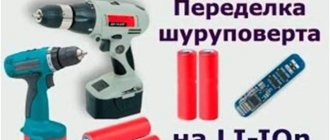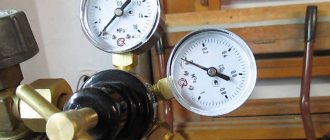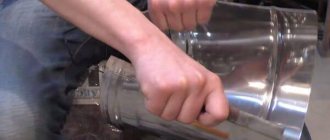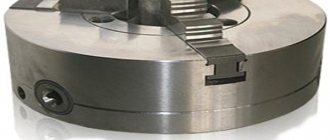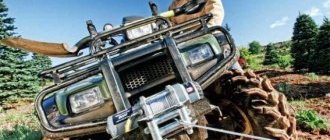Good day everyone. Well, what can I say about this video? – that’s all to the point, BUT, long introduction. It could have been more succinct.
Thank you for the video! I knew, but you clearly explained and showed everything.
Very interesting research! I think in most cases this is the problem! In my case it didn’t work - I had a runout of the shaft itself. Schur Hammer flex ACD 12/2LE
Thank you. I really also suffered until I started working as a machine operator, and until I learned that the thread runout should be relative to the end runout on the chuck. I couldn’t remove the runout on the dividing head. The cams were machined on a lathe by twisting the chuck off the thread along with the faceplate. After the grooves, the runout was up to 0.02! screwed the cartridge onto the shaft, it started to hit 4 tens again. I unscrewed and screwed it tightly along the thread until I removed the runout to 1 tenth. The thread has its own play
Thank you very much, author. So helped out
FUCK YOU ARE A GOOD MAN! THANK YOU SO MUCH.
Thanks for the video, I bought a new RYOBI drill, I like everything about it, it just hits the chuck, you can’t knock it down with a small drill, it can break it. Now I will know what to do. Well, the like is honestly earned.
I inserted a shurik into my neighbor’s butt and played it for 5 minutes and it helped.
PDC! I was praised by dot4:20″.
Thank you, Good Man, for your good advice! As they say: God bless you and your hard-working wife! Special thanks for taking the time to make this video. Although the beating of my Chinese man’s head did not go away completely, it became several orders of magnitude less! I already wanted to go hang myself: a brand new Shura drill, given to me by my daughter (I chose it myself: price-quality) for BD - and the drill hits so hard that I get seasick! The only thing is that I couldn’t figure out how quietly to tighten the head of the shurik on the thread before fixing it with a screw! In the end, I cut a washer out of a plastic bottle and it fit perfectly on the shaft. After that, I tightened the head onto the thread and tightened it with a screw. Everything works perfectly! Good luck in everything!
How is the drill chuck attached to the tool?
An external inspection of a power tool often fails to determine how the drill chuck is secured. But if you know the markings, the fastening method will be determined even with a quick glance at the cartridge .
Runout
Chuck runout can be caused by various reasons. For example, the Morse seat cone is worn out. This can be checked using paint. An even layer is applied to the cone and the cartridge . Then the mark he left on the cone is removed and studied. Another reason could be uneven wear on the cams. In this case, they need to be changed. But more often they replace a broken cartridge with a new clamping device.
In the right hands, a household drill can work wonders. With its help, holes are drilled in durable and soft materials. The chuck is an important component of a drilling machine. It is this that ensures the reliability of drill fastening and drilling accuracy. Therefore, it is very important for a home craftsman to be able to independently carry out minor repairs and replacement of this part of the device.
Brush wear
To diagnose this failure, you need to unscrew the bolts on the outside of the case. Remove one half of the plastic casing. Remove the reverse switch. Remove and check the gearbox. Use pliers to bend the latches of the rear engine cover and remove the brushes. The wear of these spare parts will be visible to the naked eye. Use a soldering iron to melt the contacts. Then dismantle everything that remains of the old brushes. Use a thin screwdriver to bend the holders. Install a set of new brushes and assemble the tool.
What is the design of the chuck used in hammer drills
Before disassembling the hammer drill cartridge, you need to understand what types there are, in addition to what their design features are. The main types of cartridges are:
- Key. This chuck is most suitable for large drills;
- Quick-clamping. It is advisable to use it if drills are frequently replaced during operation.
SDS-max cartridges are also distinguished from SDS-plus cartridges. In such chucks, the drill sits deep, so the likelihood of it falling out during operation is practically eliminated. Less powerful hammer drills are used for drilling shallow holes. What is needed here is higher precision, not fixation. Therefore, there are several cartridge options. It is advisable to have an additional one in stock so that the cartridge on the hammer drill can be replaced immediately after a possible breakdown.
How to unscrew a chuck from the shaft of a drill or screwdriver
To remove the chuck from the tool, you need to fix the shaft and, grabbing the chuck by the body, unscrew it, rotating counterclockwise, as viewed from the cams. The main thing is to get the cartridge off the ground; then it usually unscrews easily.
I was lucky, since there were chamfers on the round base of the cartridge, which could easily be caught with an open-end wrench. There were no such gaps in the replacement cartridge purchased.
After grabbing the chuck with an open-end wrench and one sharp blow on the wrench with a hammer, even without fixing the shaft, as in the photo, the chuck moved. But it was difficult to unscrew, and there was a reason for this. I had to continue twisting it by lightly hitting the key with a hammer.
Looking inside the chuck, I did not notice the fixing screw because the hole in the head for the star bit was clogged with dirt, which just needed to be removed. Therefore, while unscrewing the cartridge, I simultaneously tore off the thread of the fixing screw; it is strange that it did not break off.
If there are no chamfers on the base of the cartridge, then you need to clamp a hex rod or an M10-12 bolt with a hex head in its jaws, place a key on it and hit it with a hammer. you cannot the chuck in this way Instead of an open-end wrench, you can use a pipe wrench by grasping the chuck by the outer part of the body.
READ How to check the battery capacity of a screwdriver with a multimeter
The problem is this: I have a SKIL 6845 impact drill (in some places it’s called a hammer drill for some reason - 1 J). She is 2.5 years old. I rarely used it - once a quarter, half a dozen 6-8mm holes in the concrete. About a year ago I noticed that after turning on the impact mode, the chuck (with a key, NOT a quick-release key) unwinds itself, and not just loosens, but actually unwinds - sometimes after a 6 mm drill you can insert the next larger one.
GREAT EDUCATION ABOUT CARTRIDGES how to disassemble does not hold the bat prevention
What can we do about it? Change the cartridge ? Outwardly he looks normal. Can I wash it somehow? Like spin it as high as possible, put it in a can of kerosene and turn it with the electric motor of the drill at low speed for a couple of minutes? I noticed that when you unscrew the cartridge yourself, it crunches a little and you have to apply a slightly strange force: you use the key with great force - then the key rotates freely 1/2-2/3 of a turn, but the drill does not come out, then the resistance increases abruptly again - you turn it with force - and the drill comes free...
Tell. I called the service center and they said we'll take a look. But it’s very inconvenient for me to go to them just to “watch”, because... They don’t have the cartridges themselves - buy them yourself, they say.
By the way, what are these designations? 1.5-13 - these seem to be acceptable drill diameters, S2A - the type of key (I bought a new one yesterday - try it), and RoHM (the letter “o” with two dots on top), 1/16-1/2, L - I don’t know what
although 1/2 is similar to the diameter of the shaft on which the cartridge sits in inches...
Over the phone, the service team said that the cartridge is probably not collapsible... —————
Thanks for the advice! If only I knew how to remove this cartridge ... :(((I looked and looked and didn’t find anything that would fix it (prevent it from being removed during work) - but in order to remove it without breaking it, you probably need to do something first. True , when I started reading this conference (I’m interested in cordless screwdrivers) - somewhere I saw a mention that there are cartridges that are held in place by friction...
From not knowing how to remove the cartridge , the idea was born to rotate it with a drill in a can of kerosene (?gasoline?) - maybe it will wash out?
Yes - the warranty has expired, it seems, although I haven’t checked. 2.5 years have passed since the purchase. The warranty workshop is even further away and more inconvenient for me than the paid one.
2 Alex21: I had to drill the ceiling, but only a couple of times, although it now seems to me that the “exacerbation” of this unwinding began precisely after the ceiling, although it was a long time ago - I may be confused.
It's unlikely that I didn't tighten the tie all the way. Of course I won’t give it 100%, but with twisting everything should be fine. Although…
I tighten the cartridge like this: By hand - until it turns by hand, then with the key for the 1st time - until it turns without much effort, then I move the key to the 2nd hole and apply a little more force, then to the third - and tighten it with with great effort.
Now - when this problem has arisen - I add the 4th stage - returning to the first place of tightening with a wrench - and tighten it “as hard as I can.” I don’t seem to be offended by stupidity - a big boy


